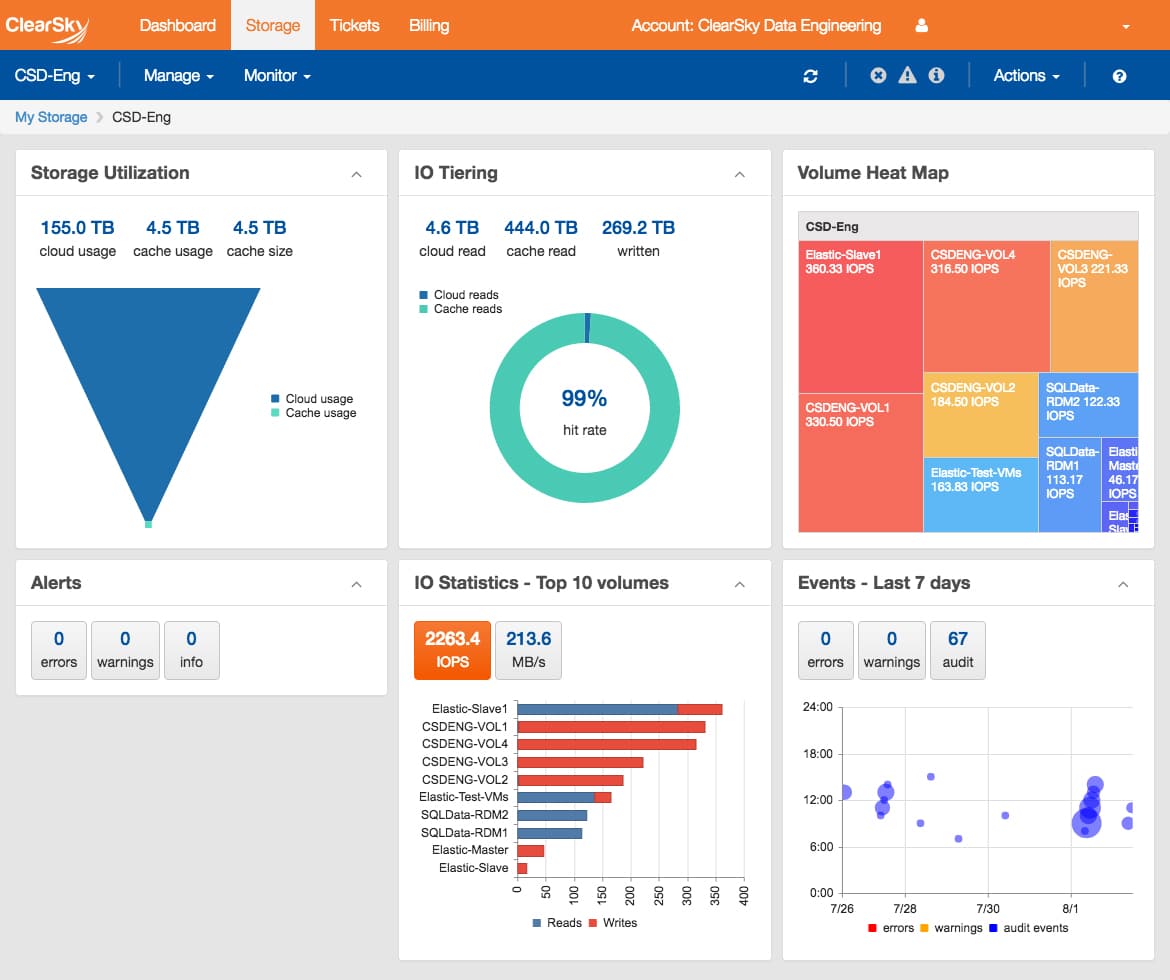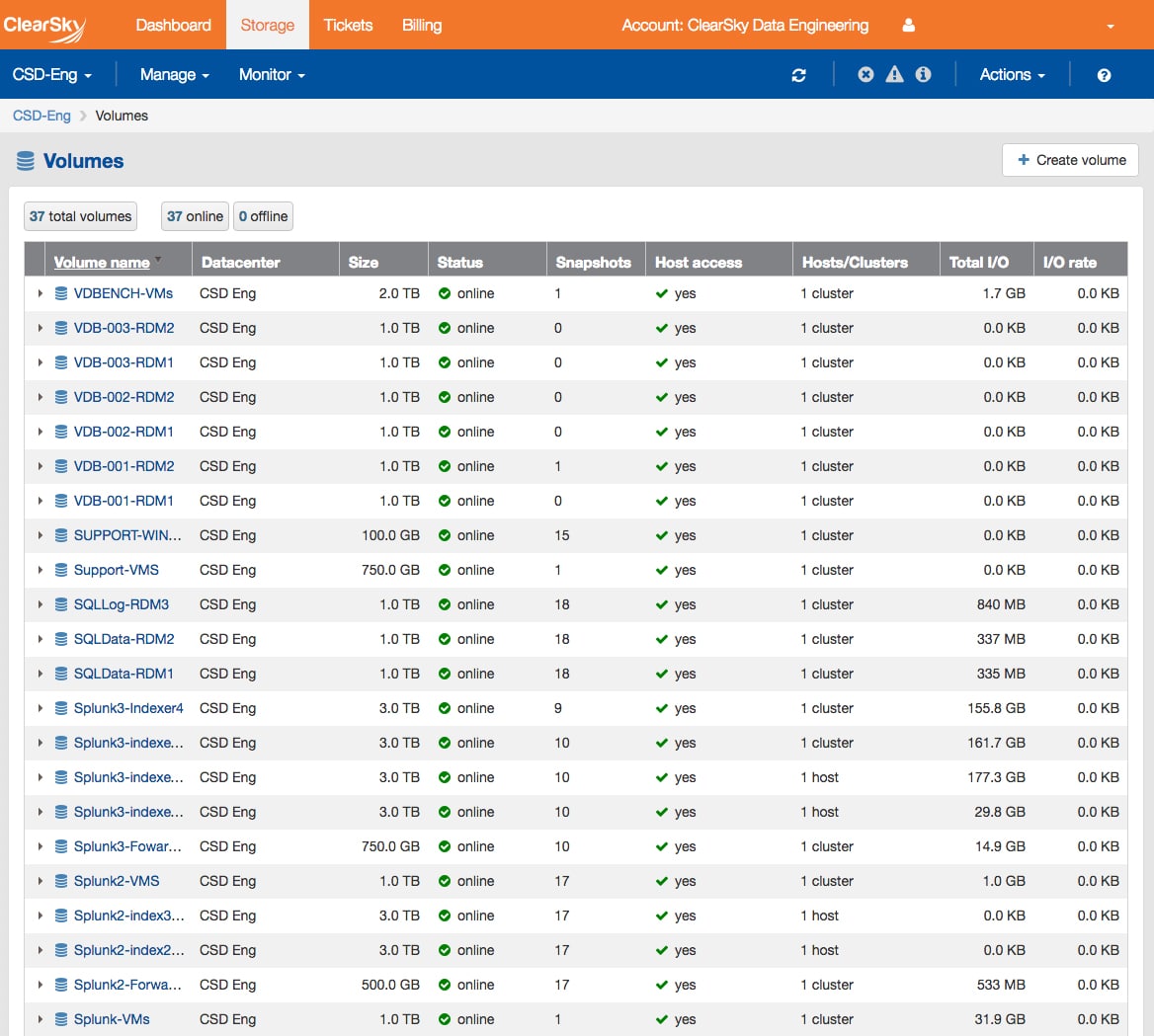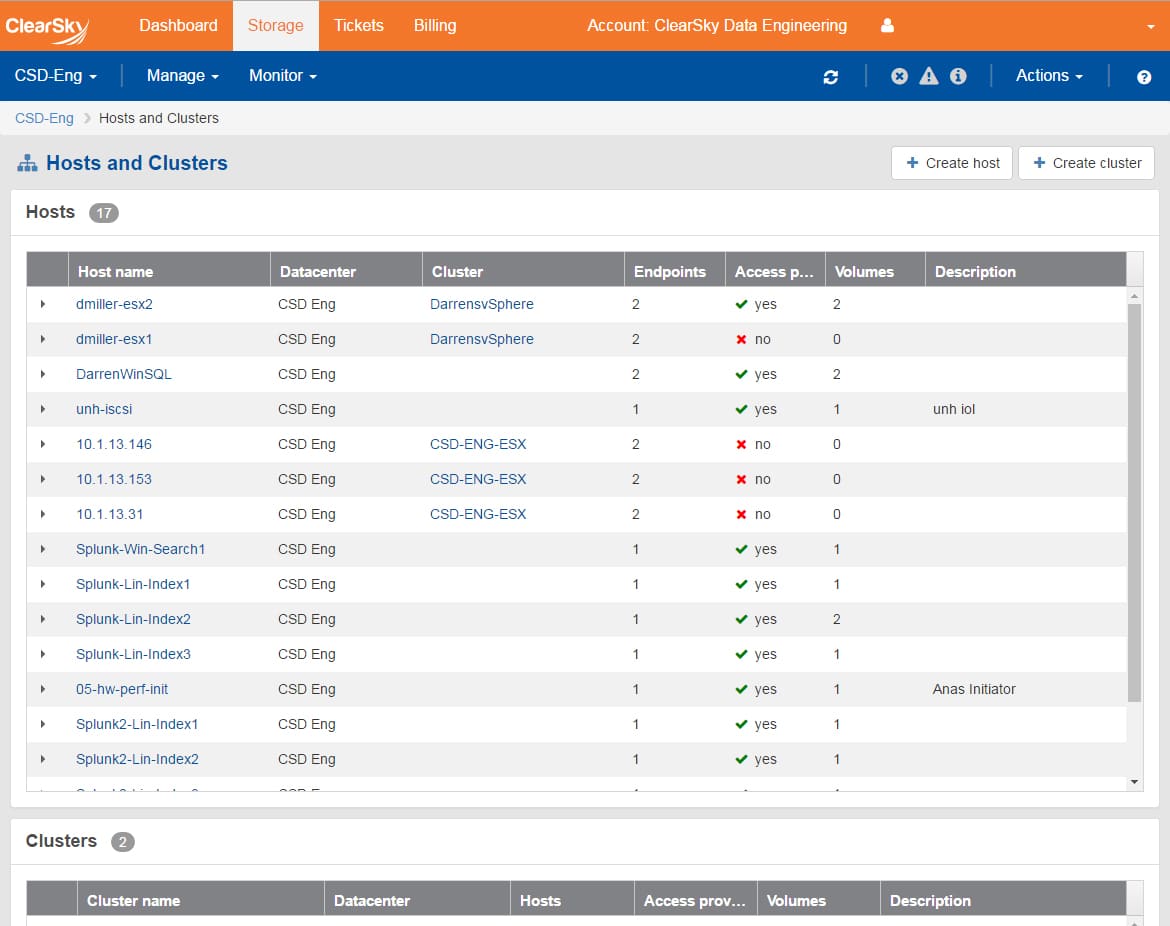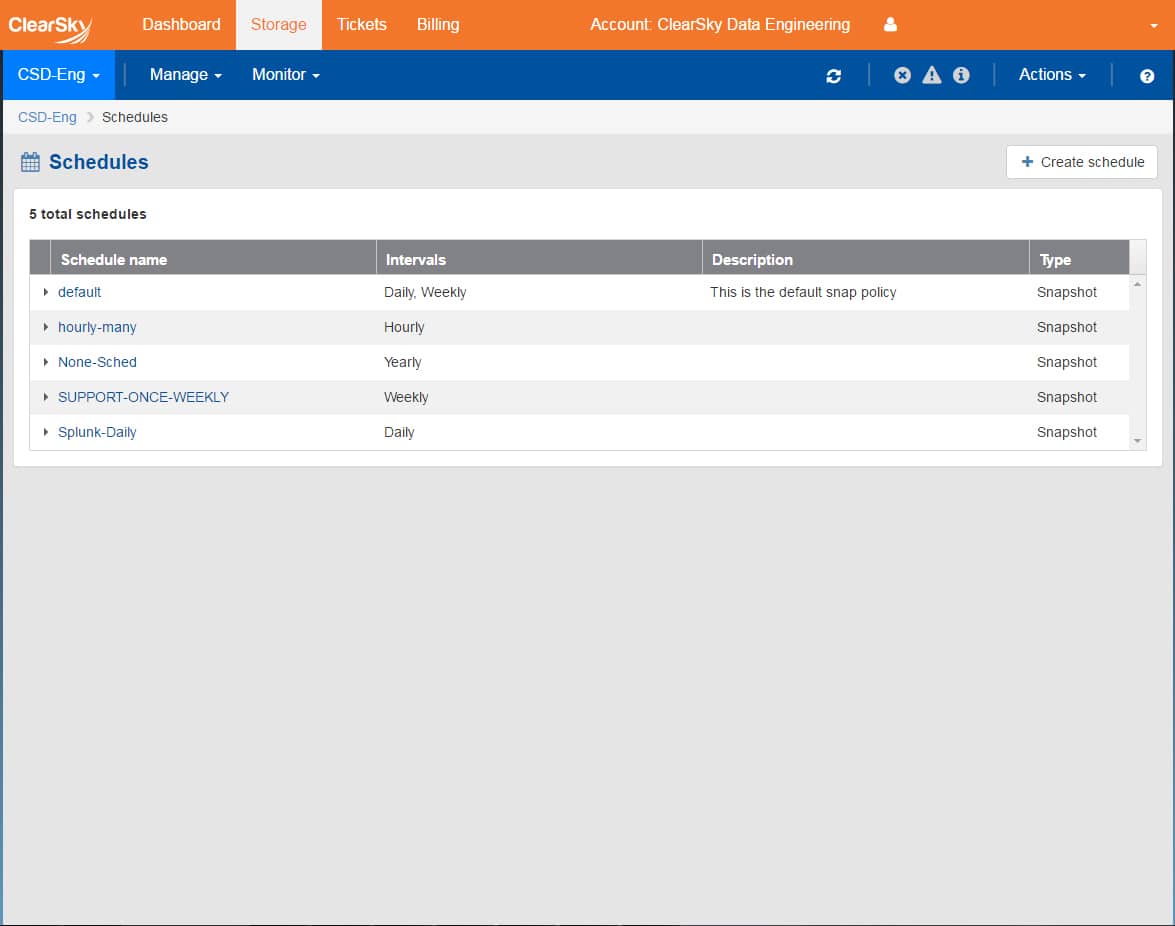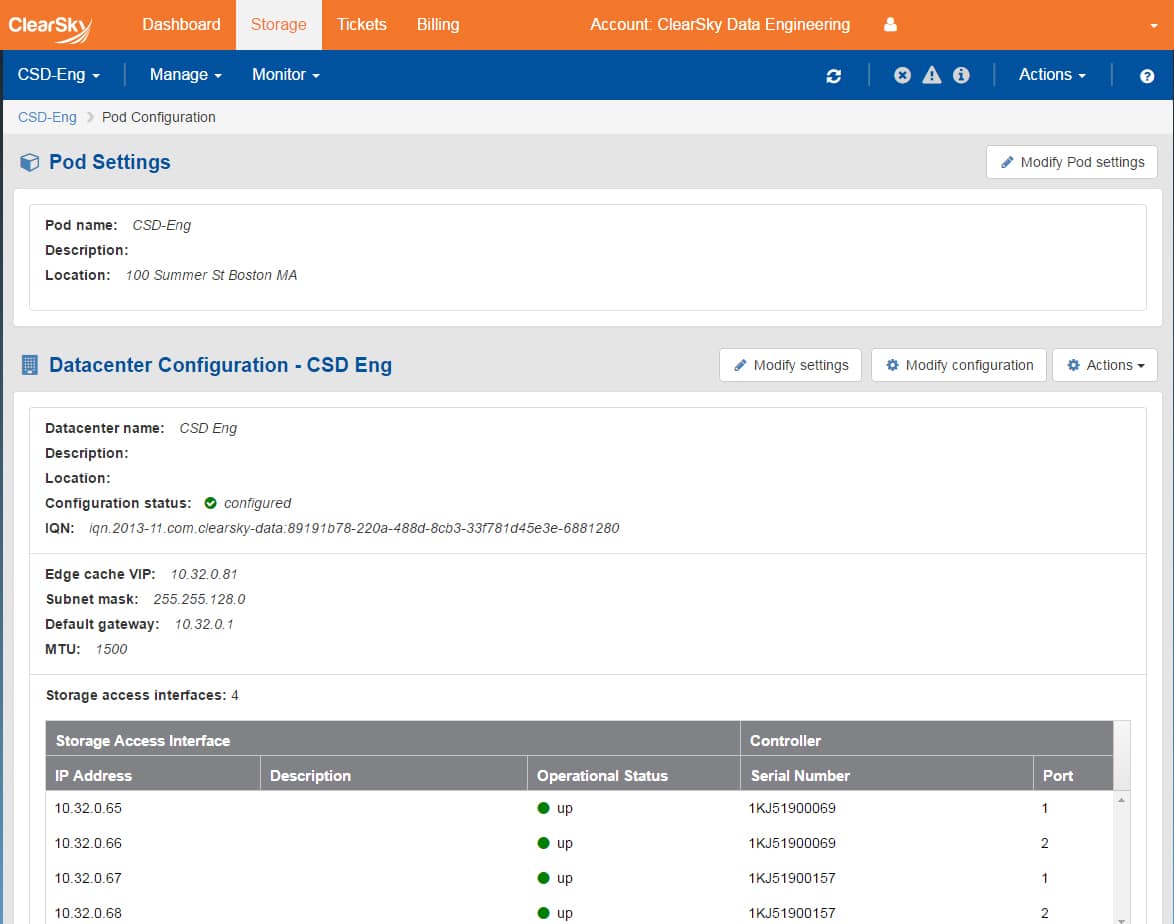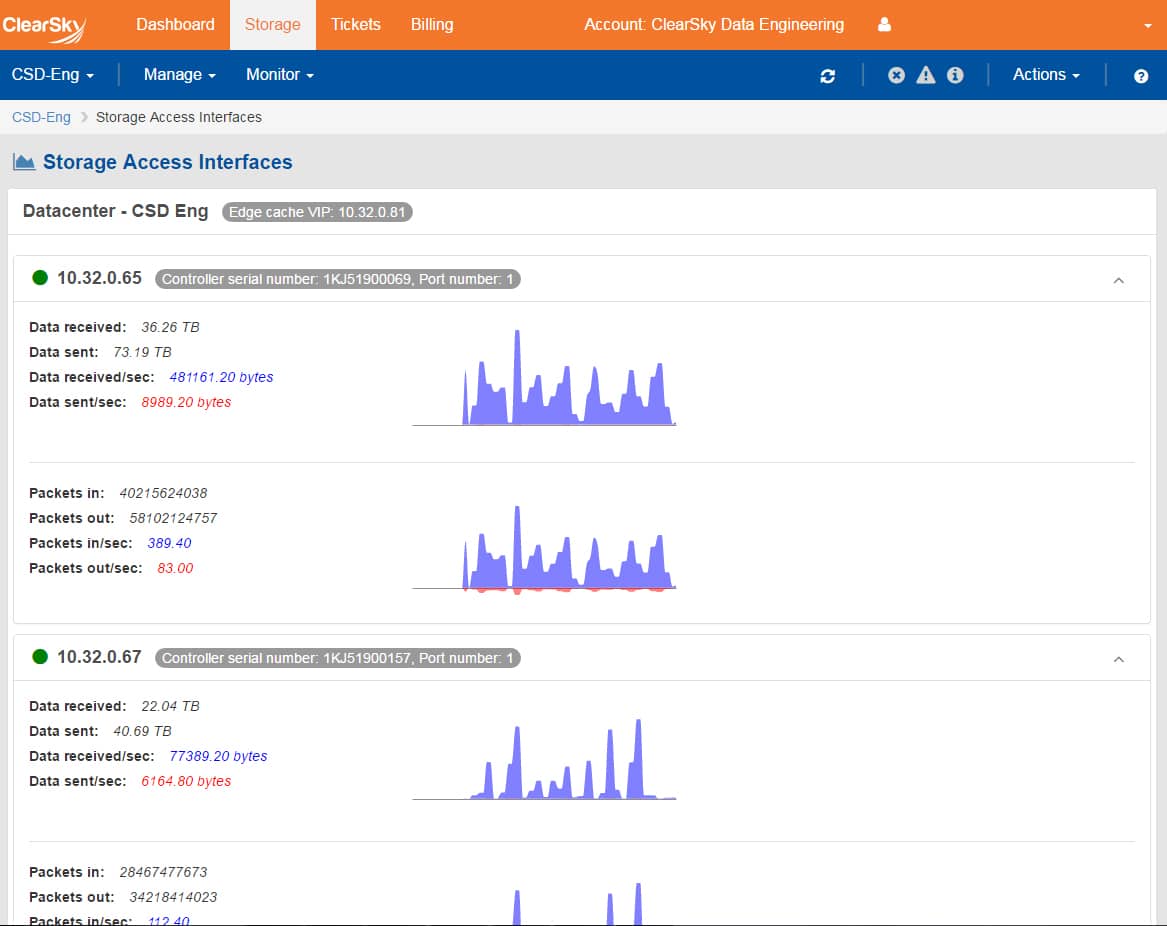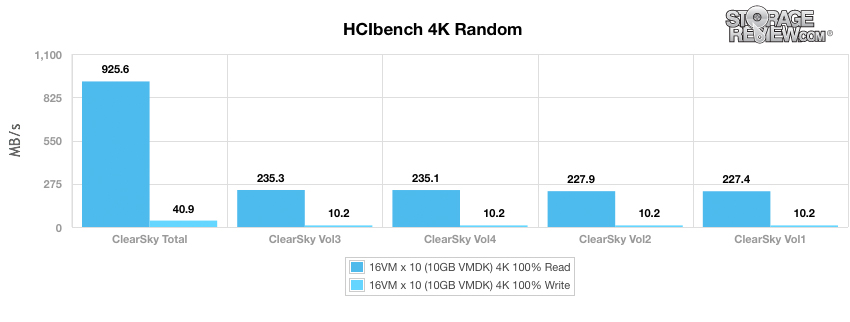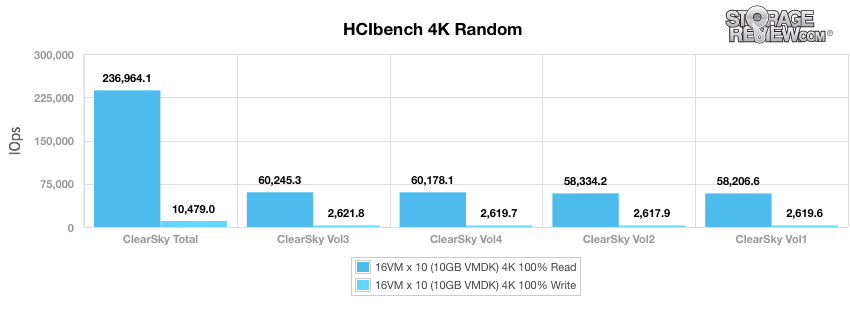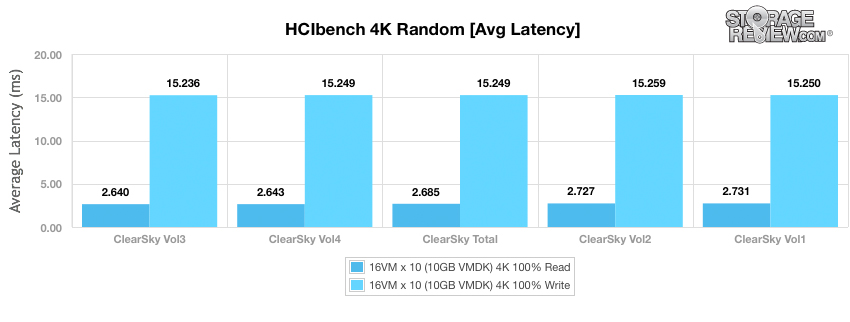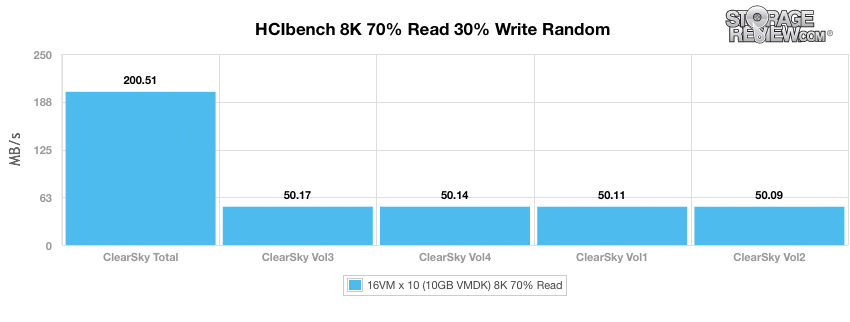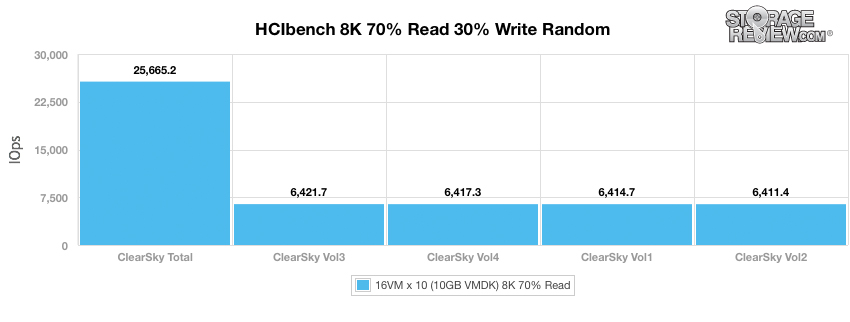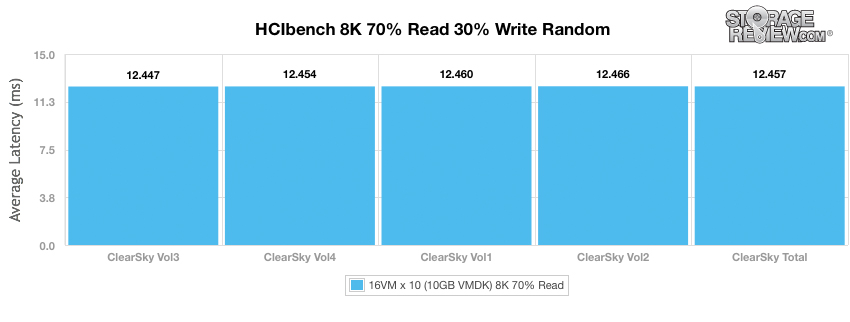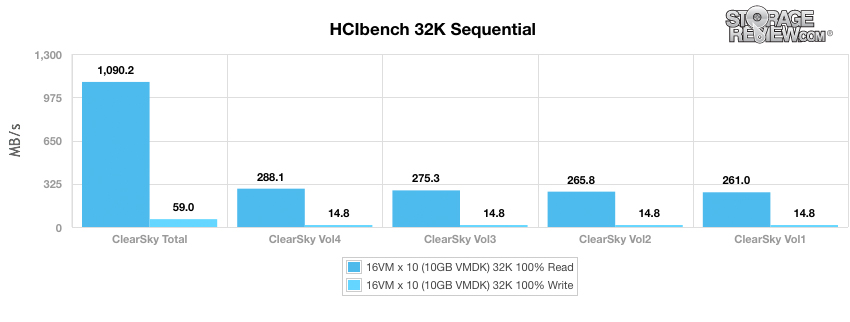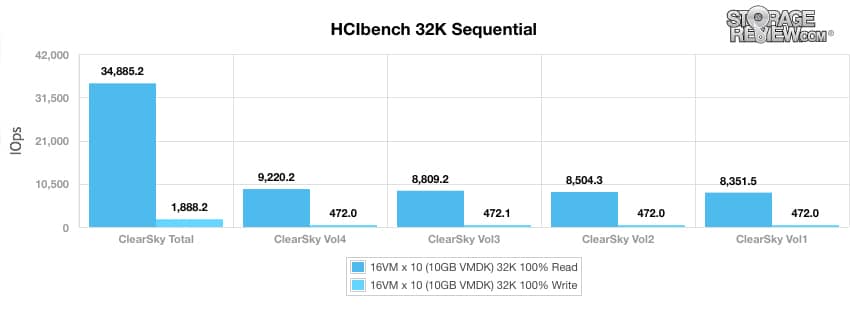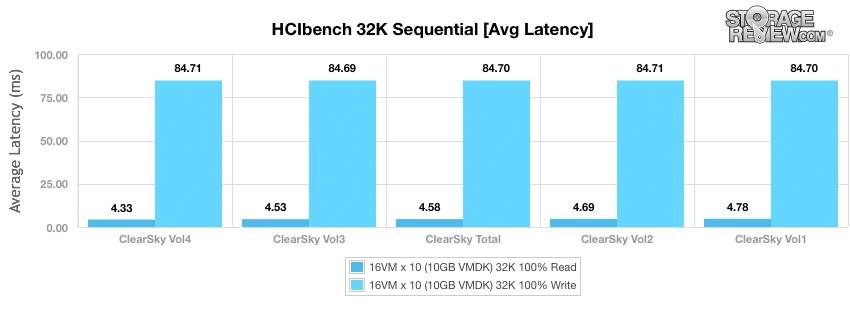
The enterprise storage market is often viewed as a bifurcation between some form of traditional data center architecture or cloud-based solutions. ClearSky Data plays in the space in between, offering data center style responsiveness and data controls, with the scalability and economic benefits of the cloud. ClearSky leverages what they call “Smart Tiered Caching” to keep hot data near the enterprise via a caching appliance, while offloading cold data to cloud providers. Combined with an intuitive web-based interface, this approach gives ClearSky customers a unique level of control over their data that neither on-premises nor cloud solutions can offer on their own.
The ClearSky Edge appliance sits on-site and supports iSCSI and Fibre Channel with support for NFS forthcoming. The box itself is a standard x86 server with local storage provided by SSDs that contain the hot data cache. The flash capacity is determined by the active workloads and the goal of having over 95% hit ratio at the edge cache. From there the edge appliance connects to a ClearSky Metro PoP serving as a metro cache, which is further backed by public cloud providers. Today ClearSky is in Boston, Las Vegas, New York, and DC and supports Amazon cloud services. They, of course, expect to expand their footprint and cloud support as they grow.
Moving data across three locations may be concerning to some from a variety of perspectives. ClearSky believes they can deliver a great experience, though, that’s fast and secure. From the edge to the PoP they quote just 1-2ms latency. Out to the cloud the responsiveness will be variable, so it’s critical to ensure the edge and PoP caches are sized appropriately and working well. From the security standpoint, data at rest and in transit is encrypted (AES-256). Furthermore, the PoPs are physically secure and ClearSky employs an outside agency for penetration, testing, and auditing.
ClearSky supports a wide range of Linux, Windows and VMware environments (with VVol support), making it easy to deploy and integrate with existing applications. The system is managed through a web-based interface that keeps deployment and management simple. While many customers will interact largely with their local PoP, additional ClearSky Metros can be used for DR, load balancing, or data center migration. In total, ClearSky aims to simplify enterprise storage by offering an SLA-based managed service across their expanding network.
ClearSky Data Specifications
- Supported Environments
- Linux – Version 2.6 and 3.x Kernels
- Windows – Windows Server 2008 R2; Windows Server 2012 and 2012 R2
- VMware vSphere – Version 5.5 Updates 1 & 2; version 6.0
Management
ClearSky Data’s web GUI has a layout that most users will find familiar and easy to use. Once signed in, users will find the following main tabs across the top of the screen: ClearSky/Home, Dashboard, Storage, Tickets, and Billing. To the right of the main tabs are the account and the user. Directly below are the secondary tabs including: CSD-Eng (the name of the data center being used for this review), Manage, Monitor, Refresh, Alerts, Information, Actions, and Help. For this review we will be focusing on the Storage tab and aspects within.
The main screen under the Storage tab highlights items such as storage utilization, IO tiering, volume heat map, alerts, events, and IO statistics for the top 10 volumes. Storage Utilization gives both a graphical representation of storage in the cloud and cache, as well as a numerical read out at the top. With IO Tiering, once again, there is both a graphical representation of how much is being read or written to both the cloud and the cache, as well as the actual numbers for each. Volume Heat Map shows the relative access frequency of the top 10 volumes with respect to the overall volume map. Alerts and Events are as they sound, showing errors, warnings, info, and audits. And IO Statistics shows throughput and transfer speeds of reads and writes.
Right-click and open in new tab for larger image
Clicking on the data center name, users are able to see all the volumes currently in the ClearSky Data program (both online and off). Users are able to create new volumes and name them here. This tab also presents information such as the volume’s name, where it is located (in which data center), its size, its status, how many snapshots have been taken, if it is host accessible, which host/cluster can access it, and I/O info such as total I/O and I/O rate.
Right-click and open in new tab for larger image
Through this same data center tab, users are able to see information on hosts and clusters as well as create new ones. This tab gives information such as the host name, the data center where it is located, the cluster where it is located, the number of endpoints it has, whether or not access is provided, how many volumes are in each host, and a description. Clusters have the same information provided as the user scrolls down.
Right-click and open in new tab for larger image
Users can set up schedules such as snapshots from the data center tab. They need to name the schedule, set the interval, describe it (optional), and set the type. The current set of schedules can be viewed here as well.
Right-click and open in new tab for larger image
Through Pod Configuration, users are able to see things such as where the pod is located and how it is configured as well as modifying these settings and configurations.
Right-click and open in new tab for larger image
Alerts and Events are displayed through this tab and are shown in a typical manner with the time, severity, and summary.
Storage Access Interfaces allow users to see what controller and port sent or received data. The amount of data is listed as well as data sent and received per second. Packets in and out per second are also listed here. Each controller and its port are displayed on this page.
Right-click and open in new tab for larger image
HCIbench Test Configuration
- 16 VMs
- 10 VMDK per VM
- 10GB VMDK (1.6TB footprint)
- Full-write storage initialization
- 1.5 hour test intervals (30 minute preconditioning, 60 minute test sample period)
For testing the ClearSky Data appliance a 1.6TB workload was deployed, which fit inside the flash layer to measure hot-data performance.
StorageReview’s HCIbench Workload Profiles
- 4K Random 100% read
- 4K Random 100% write
- 8K Random 70% read / 30% write
- 32K Sequential 100% read
- 32K Sequential 100% write
The first HCIbench test looks at peak random throughput from the ClearSky platform with a fully random 4K workload profile. For each volume we saw read speeds between 227.4MB/s to 235.3MB/s with an aggregate of 925.6MB/s. Write speeds were quite a bit lower at 10.2MB/s for each volume and an aggregate of 40.9MB/s.
When looking at peak I/O in the same 4K profile, each volume once again ran fairly close together as expected with performance ranging from 58,206.6 IOPS to 60,245.3 IOPS for an aggregate score of 236,964.1 IOPS. Write scores ranged from 2,617.9 IOPS to 2,621.8 IOPS for individual volumes with an aggregate score of 10,479.0 IOPS.
The next metric looks at the fully random 4K workload profile’s average latency. The individual volumes ran from 2.64ms to 2.731ms giving us an average score of 2.685ms for read. Looking at write latency, the ClearSky ran just over 15ms throughout with individual volumes running between 15.236ms to 15.259ms with an average score of 15.249ms.
Switching to a larger 8K data profile with a mixture of 70% read and 30% write activity, here we saw the individual volumes run just over 50MB/s with an aggregate score of 200.51MB/s.
In I/O performance of the same 8K 70% read and 30% write workload, the individual volumes of the ClearSky ran from 6,411.4 IOPS to 6,421.7 IOPS for an aggregate score of 25,665.2 IOPS.
Looking at average latency, we saw the individual volumes run just under 12.5ms and have an average score of 12.46ms.
The last workload switches to a peak bandwidth focus, consisting of a 32K sequential read and write profile. Looking at read throughput, the ClearSky’s individual volumes ran from 261MB/s to 288.1MB/s with an aggregate score of 1,090.2MB/s. Write speed was significantly lower with the individual volumes all running at 14.8MB/s with an aggregate score of 59MB/s.
I/O measurements showed read score of individual volumes running between 8,351.5 IOPS to 9,220.2 IOPS with an aggregate score of 34,885.2 IOPS. With write throughput, all the individual volumes ran more or less the same at around 472 IOPS, with an aggregate score of 1,888.2 IOPS.
Average latency showed an impressive read latency between 4.33ms to 4.78ms with an average of 4.58ms. Write latency was quite a bit higher running between 84.69ms to 84.71ms with an average of 84.7ms.
Conclusion
ClearSky Data is an attempt to give customers the controls and responsiveness of the data center with the scale and cost-effectiveness of the cloud. ClearSky has a caching appliance, ClearSky Edge, to put on-site to speed up responsiveness with “Smart Tiered Caching.” This caching appliance is a standard x86 server with SSDs for the hot data and supports iSCSI and Fibre Channel. ClearSky has support for New York, Boston, DC, and Las Vegas metros and are seeing 1-2ms of latency within the metros. Leveraging a web-based management GUI, ClearSky is also very easy to deploy and easy to manage and visualize data usage.
With the ClearSky appliance being located in a remote environment, testing in this case required some outside-of-the-box thinking. We settled in on using HCIbench hosted on a server local to the appliance. In our 4k tests we saw results of 925MB/s read in peak random throughput and 41MB/s write. Peak 4K I/O gave us 236,964 IOPS read and 10,479 IOPS write. 4k latency was as low as 2.7ms read and 15.25ms write. Our 8k 70/30 read write testing showed us 201MB/s random throughput, 25,665 IOPS I/O throughput, and latency of 12.5ms. 32K sequential testing gave us 1.1GB/s read and 59MB/s write with IOPS of 34,885 read and 1,888 write, and latency of 4.6ms read and 84.7ms write.
From a performance perspective, the data is interesting but a little hard to compare with local storage arrays or cloud-based platforms that dominate traditional enterprise infrastructures. Directionally, though, it’s interesting and provides a good starting point to understand ClearSky’s capabilities. On the surface, ClearSky’s capabilities look pretty good and sufficient for many use cases, especially at the edge. Buyers of this type of solution are much more about ease of consumption while still maintaining business rules and governance policies. ClearSky is definitely different and interesting, and worth watching as they expand their PoP footprint to include more of the country.
Pros
- Easy to deploy
- Strong read performance
- Management GUI well-conceived
Cons
- Limited metros currently
The Bottom Line
The ClearSky Data Fully Managed Storage Network brings users the ability to store data with cloud scalability and cost-effectiveness while accessing their data with local data center responsiveness.
Discuss this review
Sign up for the StorageReview newsletter

